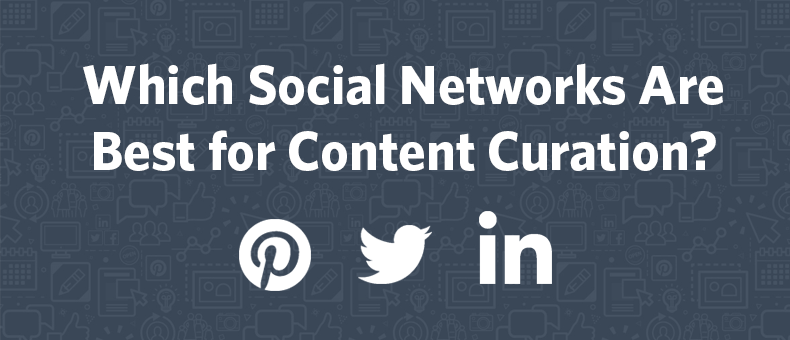
This is the second in a series of six guest posts I am writing for Constant Contact on Content Curation versus Content Creation.
Today, we look at content curation: what is it, and which social networks work best for curating content.
Really simply, success on social media boils down to putting out high-quality content in a consistent manner.
Your followers come to appreciate your consistency and value your content, and this creates a trusting relationship.
They begin to look at you as an “expert,” and that has some pretty great rewards. It’s the hinge on which all business transactions take place.
The problem with creating content all the time, however, is that it’s incredibly time-consuming. Additionally, even if you had the time, you may not have the inspiration, or ideas, to create content multiple times per day on multiple channels.
That’s where content curation can save your life.
Becoming a content curator is a bit of work up front, but once you have a system in place, it can save you tons of time. You’ll be able to curate content and share it with your followers in only a few minutes a day. I’ll show you how in a future post.
But for now, let’s look at which social media networks lend themselves best to curating content.
Remember: when you’re curating content, make sure it’s related to your brand. For example, if you are an accountant that specializes in small businesses, any hints or tips you can find about taxes, accounting, or small business practices is fair game to share. You’d want to stay away from, say fitness tips and recipes, as those are not related to your brand.
Twitter is my #1 content curation tool. Facebook posts have a lifespan of a few hours, but Tweets have a lifespan of only a few minutes. I recommend to beginners that they tweet about three times a day, morning, noon and night. However, more advanced users can tweet much more, and still get away with it.
These days, on average, I tweet about 17 times a day. Some of those are @replies and conversations, some are tweets about content I’ve created, like blog posts, but usually around 5 tweets per day are curated tweets — ones I’ve shared from reliable sources that I follow.
Tip: I use Hootsuite’s Syndicator and their auto scheduling feature to streamline this process.
Now that organic reach has become so low on Facebook pages (less than 10 percent), many people are posting more often to their pages in an attempt to get better numbers.
I love the Facebook scheduling tool. You can sit down and schedule up an entire week’s worth of posts in one sitting. I recommend at least one post per day on Facebook, but if you do multiple posts (say, 3 a day), make sure you schedule them to go out at different times of the day.
And don’t forget to use visuals and video — they are doing really well right now. Check out Post Planner — lots of great content here, and you can schedule it to Facebook from right inside Post Planner.
Email Newsletters & Blogs
One of my favorite examples of this is Mari Smith’s The Social Scoop. Every week, I get an email from her with 3 really great articles about social media. I immediately tweet them and share them on Facebook, because I know they are going to be good.
I even started a similar e-newsletter, using Constant Contact, called Blogging Mastery.
There are also plenty of industry websites and blogs that publish weekly digests of their favorite blog posts and articles which you can use to find content that’s popular in your industry.
How could you apply this idea to your business? Well, to go back to our accountant example, you could send a monthly e-newsletter to your clients with several great articles or resources that include tips about small business or accounting. Make your content so great that they can’t wait to see your email in their inbox every month!
Pinterest is one of the top curation tools. Pinterest allows you to create “boards,” to which you can “pin” or bookmark, blog posts, articles, and resources to which you want to come back to later.
But unlike browser bookmarking, Pinterest is public, people can re-pin your stuff, and it has the potential to go viral. Our accountant could create boards for “Tax time,” “Savings,” “Small Business Hacks,” or “Retirement.” They could then pin to these boards, any articles that they know will be useful. Lastly, they can revisit these articles when they need content to share on their other networks, like Facebook and Twitter.
YouTube
While many people still think of YouTube as being mostly for cat videos, there is also a ton of great content on here. You’ll find a ton of tutorials here, and you can create playlists of this content on your own account. So, our accountant, for example, could curate a list of videos that teach Excel shortcuts and hacks, for example.
Now that we’ve had a look at which social networks work best for content curation, next month, we’ll look at some of the tools you can use to curate content.
What’s your favorite network for content curation? Share in the comments below.
This article was syndicated from Business 2 Community: Which Social Networks Are Best For Content Curation?
More Digital & Social articles from Business 2 Community:




